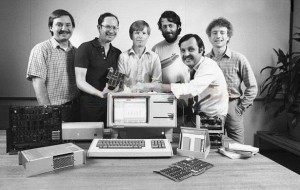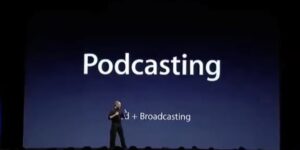Apple
Apple and Microsoft Call Truce
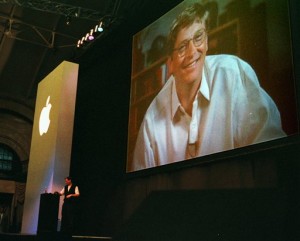
At the Macworld Expo in Boston, Steve Jobs announces that Apple and Microsoft have signed a five-year alliance. Bill Gates famously makes his seemingly ominous “big brother” appearance on the large presentation screen during the announcement. As part of the deal, Microsoft committed to continuing development of Microsoft Office for Mac over the next five years, Apple would make Internet Explorer the default web browser on the Mac, Apple and Microsoft would collaborate on Java compatibility, and Microsoft invested $150 million in Apple stock. However, the most important part of the arrangement is that both companies would cross-license all existing patents along with any new patents over the next five years, Apple would drop their long-running series of patent-infringement lawsuits against Microsoft, and Microsoft paid an undisclosed amount of money to Apple.
The common assumption in the tech community was that Microsoft’s $150 million investment in Apple saved the company. However, the reality is that with Apple holding $1.2 billion in cash at the time, $150 million was a relatively small sum of money. Some now believe the undisclosed amount of money that Microsoft paid Apple was in fact a secret settlement to the patent-infringment claims, a large part of which was related to Apple’s claim that Intel and Microsoft stole code related to the QuickTime multimedia technology. Estimated at anywhere between $500 million to $2 billion, this was the real meat of the so-called “cross-licensing” arrangement. It was likely this much larger undisclosed amount, plus the approximately $1 billion Apple earned by divesting itself of most of their investment in ARM stock over the course of 1998-1999, along with the show of confidence that Apple would be around at least another five years that gave Apple and Steve Jobs the breathing room needed to reinvent Apple and eventually build it into the most valuable company in the world.
Apple Introduces the Newton
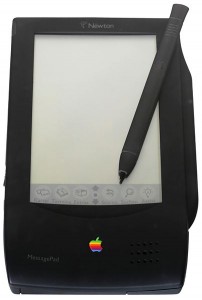
Apple introduces the Newton MessagePad, one of the world’s first Personal Digital Assistants (PDA). The term PDA was first used by Apple CEO John Scully in 1992. While a commercial failure, the Newton platform set the bar for future PDA designs. But perhaps the most important advancement the Newton offered to the technology industry was the development of the ARM processor architecture. Apple partnered with and invested heavily in the fledgling architecture to power the Newton devices, acquiring 43% of Advanced RISC Machines, Ltd. in the process. The ARM architecture has been the foundation of most of the world’s mobile devices since that time, including all versions of the Apple iPhone and iPad and now the M series processors for the Macintosh. Incidentally, in 1998 Apple began selling much of their ownership interest in ARM, reportedly generating around $1 billion through 1999. This gave Apple some much needed cash to carry them through their darkest days and into their turnaround to become the world’s most valuable company.
The Final End of the Lisa
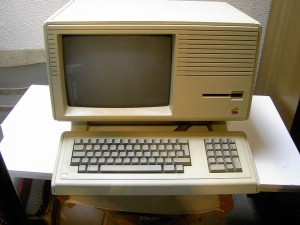
Apple discontinues production of the Macintosh XL, effectively ending the life of the Apple Lisa computer platform. In January of 1985, the Macintosh line of computers was gaining momentum but the Lisa line of computers was not selling well. In order to salvage what they could from the Lisa and offer a more powerful Macintosh computer, Apple created the Macintosh XL model by modifying a Lisa 2/10 computer to run the Macintosh operating system. Apple discontinued the Lisa in April of 1985, but continued production of the hybrid Lisa/Mac Macintosh XL until this date.
Apple Lisa is Born
July 30, 1979
Apple begins work on the Lisa, which would become the world’s first commercial computer with a graphical user interface. Originally intended to sell for $2,000 and ship in 1981, the Lisa is delayed until 1983 and sells for $10,000. Utilizing technology that is ahead of its time, the high cost, relative lack of software, and some hardware reliability issues ultimately sink the success of the Lisa. However, much of the technology introduced by the Lisa influenced the development of the Macintosh as well as other future computer and operating system designs.
Apple Introduces iBook Laptop

Apple introduces the iBook laptop, the first mainstream computer designed and sold with built-in wireless networking.
Mac Cube Introduced
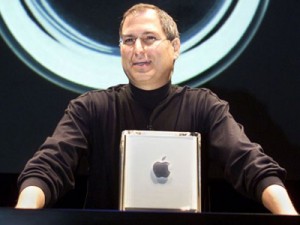
Apple introduces the G4 “Cube” Power Macintosh. At the time of introduction, it was one of the smallest desktop computers ever produced. While not considered a commercial success, it did find a small, dedicated following and it was a foreshadowing of future Apple designs.
Apple Introduces iCal 📅
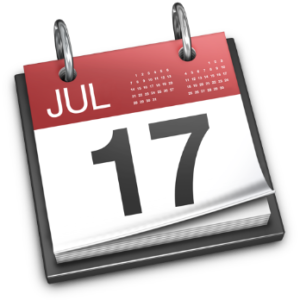
July 17, 2002
Steve Jobs introduces Apple’s now ubiquitous calendaring software, originally named iCal, for Macintosh computers. At the time, it was an innovative advancement in calendaring software for the Mac, allowing internet sharing of calendar data and letting users manage multiple calendars. It also took advantage of the then-new Apple iSync technology to sync their calendars to Bluetooth-enabled mobile phones, PalmOS devices, and the Apple iPod so users could access their calendars on the go.
iCal became a mainstay for Mac users but it achieved mainstream usage starting with the release of the iPhone in 2007. Since the operating system of the iPhone (called iPhone OS at the time, later renamed iOS is 2010) is at its core identical to the Mac OS X operating system, much of the software that runs on the Mac OS can easily be ported to the iPhone, iCal included. Apple, however, called the iOS version simply “Calendar”. Apple renamed iCal on the Mac OS to match the iOS name in 2012 with the release of Mac OS X Mountain Lion.
Originally released as free standalone download, iCal was not actually available until September of that year and then bundled as part of the Mac OS in the next year. However the date of July 17th has become very important in technology history because it was used as the basis of World Emoji Day, started in 2014. This date was chosen because the emoji that Apple created to represent a calendar has always shown the date July 17th, in recognition of the date that the original iCal software was introduced.
Gil Amelio Ousted from Apple
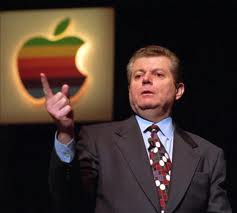
Apple Computer announces the resignation of Gil Amelio as CEO. Having been ousted by the board of directors, Amelio’s departure paved the way for Steve Jobs to re-take the helm of Apple. Ironically, it was Amelio who brought Jobs back into the fold of Apple by purchasing Jobs’ company NeXT to use as the basis for the next Mac operating system.
The Phone That Changed Everything
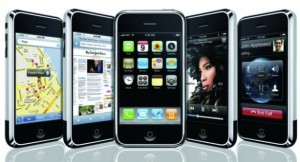
Nearly 6 months after it was introduced, Apple’s highly-anticipated iPhone goes on sale. Generally downplayed by Old Word Technology pundits after its introduction, the iPhone was greeted by long lines of buyers around the country on that first day. Quickly becoming an overnight phenomenon, one million iPhones were sold in only 74 days. Since those early days, the ensuing iPhone models have continued to set sales records and have completely changed not only the smartphone and technology industries, but the world as well.
Apple Takes Podcasting Mainstream
Apple releases iTunes 4.9, the first version of iTunes to incorporate Podcast subscribing and listening. Podcasting was a growing phenomenon and Apple realized it could both help build the medium and also become the defacto Podcast standard by linking it to its incredibly popular iTunes and iPod platforms. On this date there were 3000 Podcasts available in the iTunes directory. Apple’s move paid off and as of 2021 there were over 2 million Podcasts listed in the Apple Podcast Directory. Apple’s Podcast platform is still considered the standard on which podcasters should publish their shows.
There was an up and coming Podcast directory named Odeo at the time. Given Apple’s move Odeo suddenly became irrelevant. However, the people behind the company shifted focus and soon created a new service called Twttr, soon to be renamed Twitter. Isn’t it so interesting the way technology history weaves itself?

